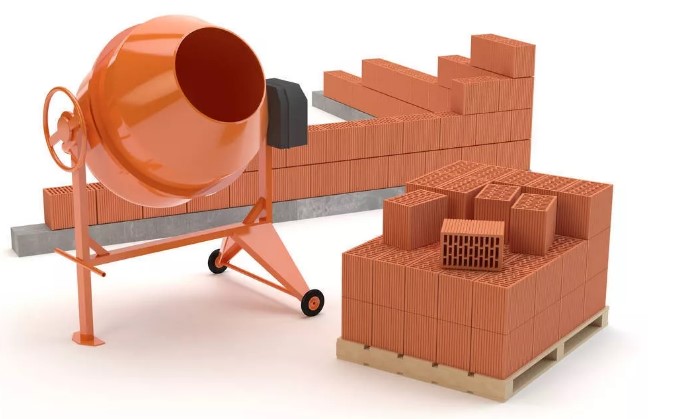The Origin Of Concrete Mixer
Concrete was first invented by the British, so it was inferred that the concrete mixer was also invented by the British.
The period of emergence occurs in the form of self-propelled agitation. As the demand for concrete continues to increase, forced mixers have emerged. The forced mixer can be divided into two types: vertical shaft and horizontal shaft. Almost all of these types of mixers are available in China.
The self-propelled mixer dates back to the early 20th century. A drum concrete mixer driven by a steam engine in the early 20th century has begun to appear. Over the next 50 years, reverse-discharge and tip-out double-cone mixers and split-cylinder mixers were introduced and developed.
Since the self-propelled concrete mixer is mainly based on agitated plastic concrete, the forced mixer started to rise. Since the rise of the early 1950s, forced mixers have been rapidly developed and promoted. The first to appear was the disc vertical shaft forced concrete mixer. This type of mixer is divided into two types: turboprop and planetary.

After the 1970s, with the application of lightweight aggregates, a circular groove horizontal shaft forced mixer, also known as a horizontal shaft mixer, appeared. It is divided into single horizontal shaft type and double horizontal shaft type, and has the characteristics of both self-falling and forced stirring. It is a new type of mixer developed in the 1970s. It can be divided into single-shaft and double-shaft. This type of mixer has both self-falling and forced mixing. The linear speed of the mixing blade is higher than that of the turbo. Small, so the wear resistance is much higher than the vortex type. The single-shaft mixer is made up of Germany with compact structure, low power consumption, good wear resistance of the blade lining, full load start and the ability to stir lightweight concrete. China has also introduced prototypes to the company. The twin-shaft mixer is a new model that has been developed with the improvement of concrete construction technology. Foreign countries have appeared in the United States and Germany since the late 1940s, but their development is basically at a standstill due to the immature shaft end seal technology.
Until the early 1970s, due to the breakthrough of this technology, the twin-shaft mixers have been redeveloped in many countries and have now formed a series of products. China developed successfully in the early 1980s, but it has developed rapidly, and its product specifications and product quantities far exceed those of other models. The stirring mechanism is the core part of the twin-shaft mixer. The quality of the concrete mixing is good, the productivity is high, and the maintenance cost is related to it. The agitation mechanism is composed of a horizontally disposed double circular grooved cylinder, two agitating shafts rotating in opposite directions, and agitating blades mounted thereon. The working radius of the agitating blades is mutually intersected, and the blades are at an angle to the centerline of the shaft. When the agitating shaft rotates, the blades drive the mixing material on the one hand to make a circular motion in the two mixing drums, and roll up and down while stirring the blades. In the meeting or overlapping part, the mixed material exchanges between the two axes; on the other hand, the mixing material is pushed along the stirring axis direction and continuously moves from the rotating plane to the other rotating plane. This type of agitation is more intense than a self-propelled concrete mixer and is primarily suitable for agitating dry hard concrete.
The continuous concrete mixer then appeared. The working principle is as follows: a spiral stirring blade is arranged therein, and various materials are continuously weighed according to the mixing ratio, and then fed into the mixer, and the stirred concrete is continuously discharged from the discharging end. Advantages of a continuous concrete mixer: short mixing time and high productivity.
With the development of concrete materials and construction technology, many new types of concrete mixers have emerged, such as steam heated mixers, supercritical speed mixers, sonic mixers, swinging disc mixers without mixing blades and concrete mixers with secondary mixing and so on.